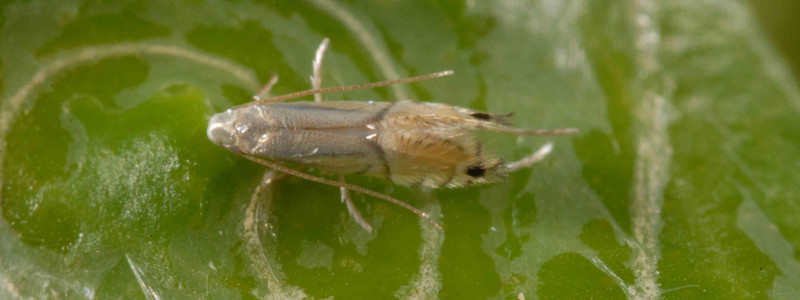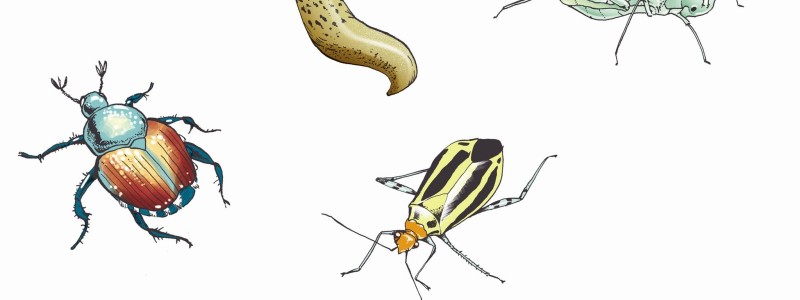ORIGIN:
Leafminer is native to eastern and southern Asia and is now widely distributed where citrus is grown in Asia, Papua New Guinea, Australia, northern and central Africa, and Florida in the United States of America. The moth was first recorded in Australia in and around Darwin in the Northern Territory in 1912.
DESCRIPTION:
Citrus leafminer is the most common pest that attacks all varieties of citrus.
ADULTS:
The adults are small, delicate moths with narrow paired forewings and hind wings fringed with long hairs. The upper surface of each forewing has a black dot at the tip, and irregular dark lines separating an inner region (covered with silvery scales) from an outer region (with silver, light yellow and brown scales). The hind wings are narrower than the forewings and are covered with silvery scales. At rest, with their wings folded lengthwise, the moths are about 2 mm long. In flight, their wingspan is about 4.5mm.
Because flight generally occurs at night, the adults are rarely seen in daylight except when they are disturbed, generally by human activities. When this occurs, flight is short and rapid. Females are slightly more common than males. Both sexes emerge from their pupal stage during the early morning hours. Mating generally occurs at dusk and in the early evening about 9 to 12 hours after emergence. Adult female moths start laying eggs about 24 hours.
http://www.dpi.nsw.gov.au/__data/assets/pdf_file/0006/137634/citrus-leafminer.pdf
It is not the adults that cause the most aggravation to home gardeners but the larvae.
Citrus leafminer larvae feed by creating shallow tunnels, or mines, in young, immature leaves of citrus trees.
A common description is: “My citrus leaves are curling!”
With further investigation it is discovered that the new leavers are twisting and distorted but also have the tell tale sign of “silver, wiggly, snail trail looking lines”.
The silver wiggly lines on the leaves are the first sign. The leaves then become distorted. This inhibits their photosynthesising ability. This won’t kill trees, but they will be stunted and unhealthy with a reduced yield. When fully grown, the larvae will curl the leaf around for protection while they pupate.
Such infestations usually only occur in late summer and autumn, and are often related to low natural enemy activity.
REFER TO MY BLOG: “BENEFICIAL INSECTS FOR YOUR GARDEN”
CONTROL:
Because infestations are limited to flush growth, predominantly in late summer and autumn, their severity can be reduced by:
- Fertilise in early Spring to promote a flush of new growth in spring when the pest is either not present or rather scarce. A secondary fertilise (only small amount) in Autumn if required.
- Pruning of late summer and autumn flush growth can also be of use to regulate and get rid of unattractive infestations on trees.
- Cut off any curled, damaged or rolled leaves that could be hiding the pupae.
- Spray with horticultural oil early morning to deter the moth from laying new eggs. Be aware that the oil won’t kill the larvae but simply deter.
- Natural enemies: These include small parasitic wasps and predators such as lacewings.
http://www.dpi.nsw.gov.au/__data/assets/pdf_file/0006/137634/citrus-leafminer.pdf





